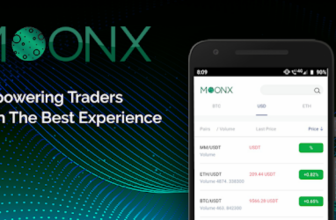
Financial leadership today runs on clarity. CFOs can’t make confident calls if their data is cloudy, fragmented, or late. In many companies, the blind spot still hiding behind financial dashboards is asset tracking.
When asset data isn’t accurate, everything from depreciation schedules to compliance reports starts to wobble. But when tracking is tight and automated, the difference shows immediately – in visibility, audit readiness, and trust in the numbers.
Let’s unpack how precise asset tracking feeds smarter CFO dashboards and keeps audits smooth instead of stressful.
Table of Contents
Why Asset Tracking Matters to Finance Leadership
Source: raapyd.com
Every organization owns assets that shape its balance sheet and operational efficiency: IT hardware, vehicles, software licenses, production equipment, and leased property.
Yet, many finance teams still rely on static spreadsheets or outdated records that drift out of sync with reality.
Finance teams that employ fixed assets verification can reduce discrepancies between the books and physical inventories.
Accurate tracking turns those assets from accounting entries into live data points. For a CFO, that means:
- Real-time insight into asset value and utilization
- Confidence in depreciation and amortization schedules
- Cleaner reconciliations between finance, operations, and IT
- Faster response to audits and compliance reviews
Without a unified tracking system, assets fall off the radar. Equipment may remain on books long after disposal, or ghost assets may appear in reports. Both scenarios distort financial accuracy and expose the business to audit risks.
Feeding the CFO Dashboard with Reliable Data
A modern CFO dashboard is only as strong as the data feeding it. When asset tracking systems integrate with ERP or accounting software, the finance view shifts from static reports to dynamic intelligence.
Imagine having live data showing where each asset sits, its lifecycle status, and current valuation. Instead of waiting for quarterly reconciliations, a CFO can make decisions daily, armed with metrics that actually reflect reality.
Key dashboard insights strengthened by asset tracking include:
| Metric | Benefit |
| Asset Value by Category | Identifies underutilized or overvalued assets for cost optimization. |
| Depreciation Forecasts | Improves financial planning and compliance with IFRS or GAAP standards. |
| Asset Turnover Ratio | Links operational performance directly to financial efficiency. |
| Maintenance and Warranty Costs | Prevents surprise expenses and supports better capital budgeting. |
When asset tracking becomes automated – through barcoding, RFID, or IoT sensors – those data streams update in real time. That creates a living dashboard, one that evolves with the company’s daily operations instead of lagging behind.
Building Audit-Ready Transparency

Source: bestsapcbi.com
Few words make a CFO’s heart race faster than “audit season.” The stress often comes not from the audit itself but from hunting down missing documentation, locating assets, or reconciling numbers that don’t quite line up.
Accurate asset tracking changes that dynamic. Every asset has a verified history – purchase date, value, assigned owner, and movement log – creating an automatic audit trail.
Finance teams gain:
- Verifiable records for each asset’s lifecycle
- Faster reconciliations between books and physical counts
- Reduced risk of noncompliance or write-off disputes
- Clear documentation for external auditors
Auditors no longer have to rely on manual confirmations or field inspections for every discrepancy.
Instead, they can review digital trails that are timestamped, consistent, and easy to verify. That saves time for everyone involved and reduces the potential for penalties or re-statements.
Linking Finance, IT, and Operations Through a Single Source of Truth
Strong asset tracking bridges silos across departments. Finance gets clean data for reporting, IT gains better visibility over devices and software licenses, and operations can schedule maintenance or replacements without disrupting the budget.
A unified system also prevents double-spending and reduces capital waste. For example:
- Fleet management teams know which vehicles are idle and can redeploy instead of buying new ones.
- IT departments can see license renewals in advance, avoiding lapses or duplicates.
- Finance leaders can run depreciation automatically across departments without chasing spreadsheets.
Each department benefits, but the CFO reaps the biggest reward: cross-functional data that actually aligns.
Choosing the Right Tracking System

Source: flexspring.com
Not all asset tracking tools are built the same. Finance leaders should look for systems that offer:
- Integration with existing ERP or accounting platforms
- Automated depreciation and reporting features
- Barcode, RFID, or IoT tagging for physical validation
- Mobile access for on-site audits or inventory checks
- Role-based access controls for compliance security
When evaluating vendors, CFOs should also consider scalability. A tracking platform that fits today’s operations should easily grow with new facilities, product lines, or acquisitions without losing accuracy.
From Data Noise to Financial Confidence
Asset tracking isn’t just an operational upgrade – it’s a finance strategy. It transforms data noise into clarity, giving CFOs a dashboard they can rely on for every forecast, audit, or investor meeting.
When assets are accurately tracked, every number in the dashboard tells a story backed by proof. Audits become routine checks instead of firefights. And decision-making moves faster because the data is solid, fresh, and complete.
For finance leaders aiming to build resilience and trust in their numbers, asset tracking is no longer optional. It’s the foundation that keeps every financial insight honest.







